
As the first national park established, Yellowstone is one of the most diverse in the United States. The park houses geothermal wonders, wild animals, and a gorgeous landscape. Its proximity to Grand Teton National Park draws more visitors looking for a weeklong vacation. The inspiring topography and the unique excitement from the natural geysers make it a special place to visit. After my fantastic trip around Yellowstone, I have compiled a guide based on my experiences in the park to create an ultimate itinerary. It is my best attempt to balance avoiding the swarms of people found around the park with visits to all of the major landmarks + more.
This itinerary follows the park roads clockwise entering the park from the South or West. The South Entrance is a mile from Grand Teton’s North Entrance and is only useful if you are coming from that park. Alternatively, enter the park through the West Entrance from West Yellowstone or Bozeman in Montana. (I recommend coming into the park the day before you plan to start exploring so you can get an early start the next morning). There is a good campground at Norris, and the Old Faithful Lodge is a pleasant place to stay for your first night in the park. (Old Faithful is close to the West Entrance as well, so you could spend the night in West Yellowstone). For your second night in the park, camp at Madison Campground or stay at a hotel in West Yellowstone. Following a natural loop around the park from there would put you in Canyon Village at Canyon Campground or the Canyon Lodge for night three. This can be done in a different order quite easily if your plans indicate that, but I recommend the order below if it is convenient.
Day 1:
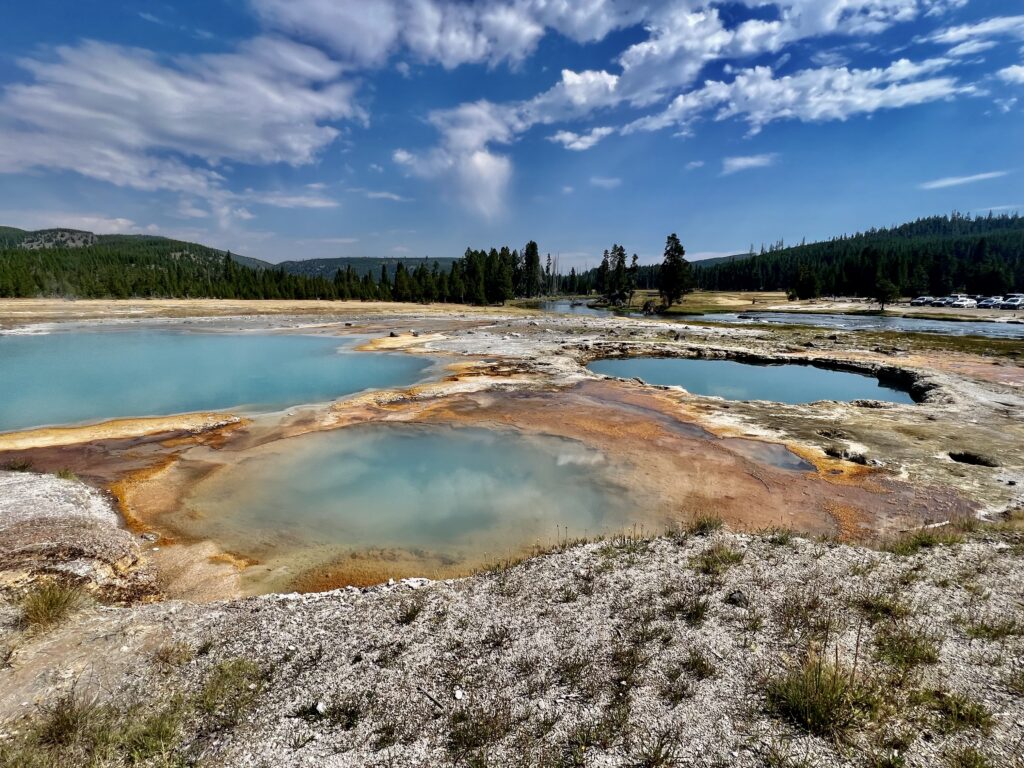
The first day at Yellowstone always starts at Old Faithful. It is imperative to get there early, as it will fill up quickly after seven. You will be able to catch a morning eruption with plenty of breathing room. Given how packed the boardwalk can get later in the afternoon, an unobstructed view is worth waking early for.
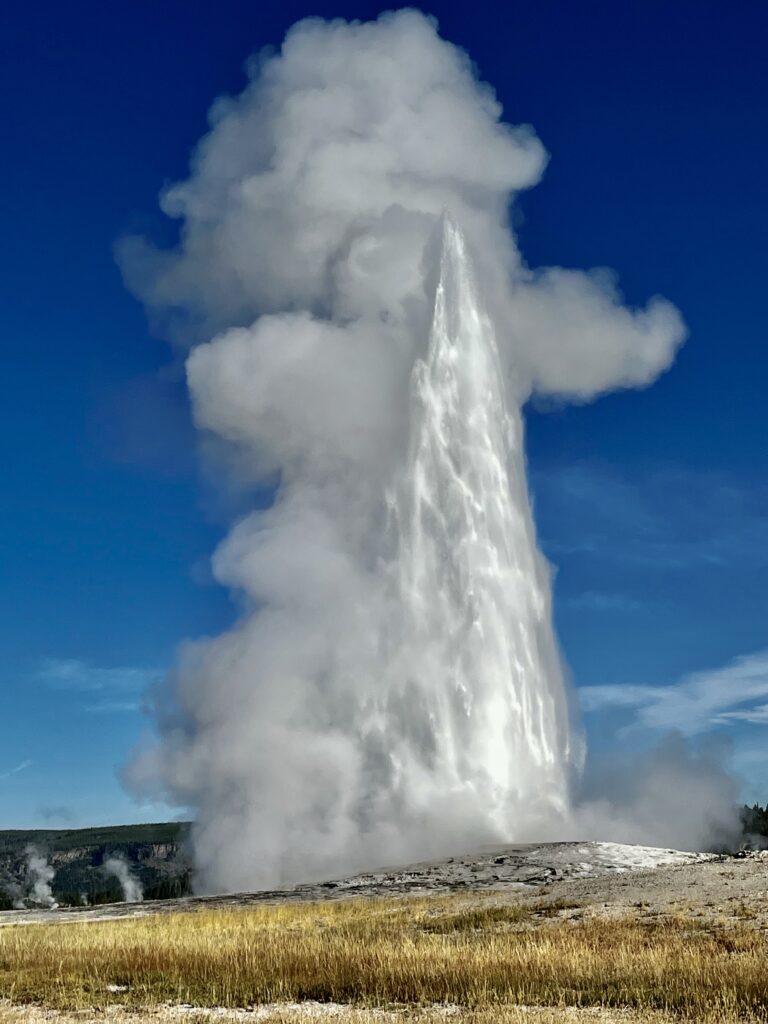
The Upper Geyser Basin is not limited to Old Faithful. There are actually hundreds of geysers and hot springs in that otherworldly landscape. Some well-maintained trails and boardwalks wind throughout the attractions. This is a great place to get your geyser fix. Below are three levels of hiking in the area depending on your interest in geysers and in walking.
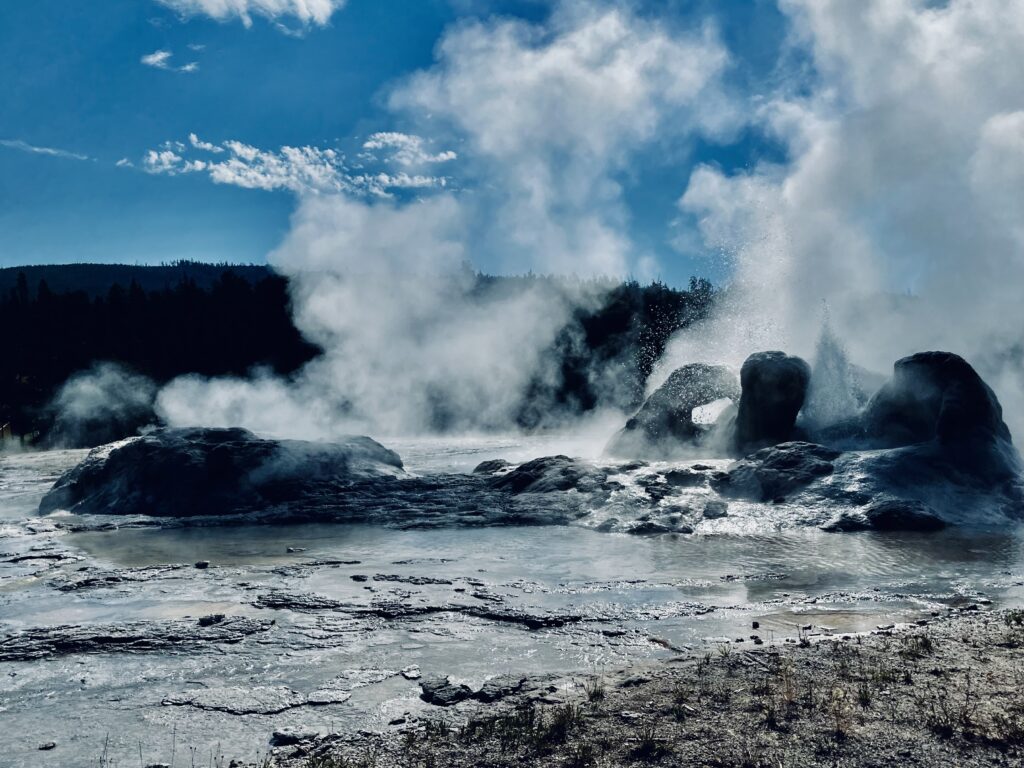
Option 1:
If you are hoping for a shorter hike I recommend sticking to the boardwalk to enjoy the main attractions including Grand, Giant, Castle, and Grotto Geysers, plus a stop at the renowned Morning Glory Pool. The 3.5-mile loop is almost fully on the boardwalk without any elevation but provides awesome views around the valleys and immerses you in the geothermal features.
Option 2:
The second route includes all of the trails from the first but adds a loop up to Observation Point, a lovely lookout over Old Faithful. It also adds the manmade Solitude Geyser which was accidentally created during an experiment. The total loop is 4.5 miles.
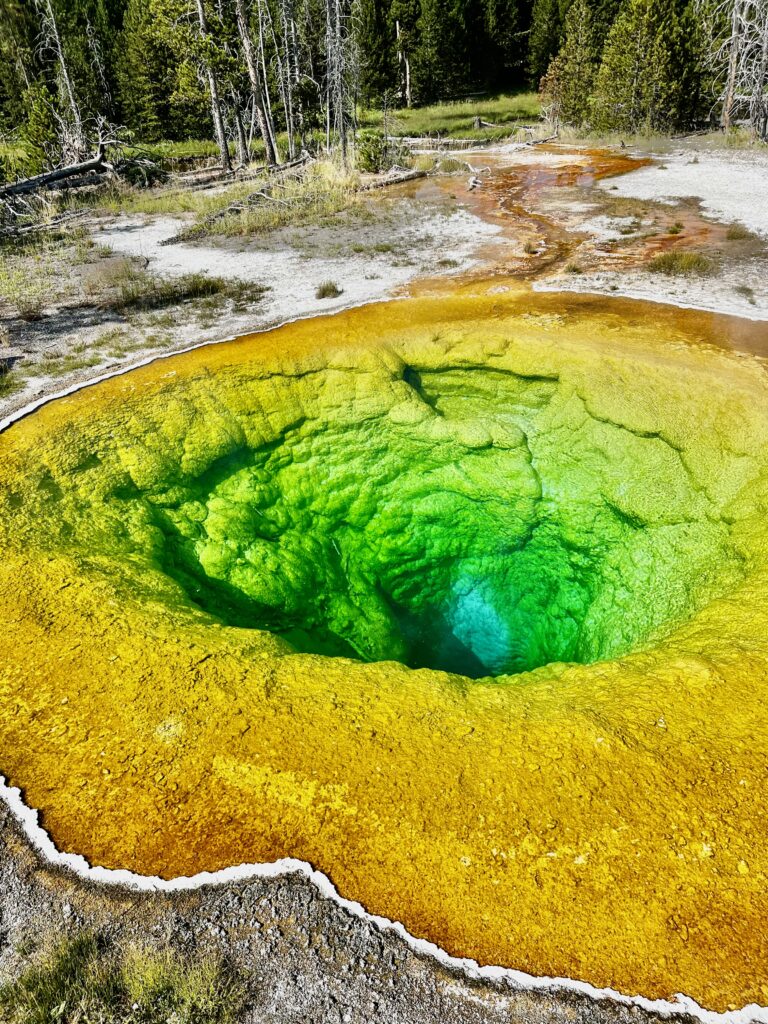
Option 3:
If you can’t get enough of the geothermal features and are willing to put more mileage under your belt, try to hit as many of the trails as possible. You won’t be disappointed! You can take connector trails to Black Sand Basin and Biscuit Basin as we did. To be fair, it is easier to reach these locations by road, but the connector trails make the experience worthwhile. Our Basin Circumnavigation included all of the trails from the first two options, plus connector trails on which we found many enchanting springs from azure to rainbow in coloring. It covered the entirety of the Upper Geyser Basin and visited Biscuit and Black Sand Basins along the way. Our loop was 9.5 miles of mostly flat terrain. It took us the better part of the morning, but we had no regrets.
Directions: To do this loop, follow the signs along the boardwalks from Observation Point to Morning Glory Pool. (You should see many other geysers along the way.) Once you leave the boardwalks at Morning Glory Pool follow the Continental Divide Trail northwest past Saphire Pool until you reach a road crossing. Cross into Biscuit Basin and explore the boardwalks there before connecting onto the UGB Biscuit Basin Trail. Continue southeast until you reach the Punch Bowl Black Sand Basin Trail. You can decide whether you would like to do the out and back to Black Sand (which adds two miles). Honestly, I would skip it and visit by car later. Once you return, continue back to the main complex on the CDT.

Next, visit the incredible Lone Star Geyser which is just down the road from Old Faithful. The trip to this isolated landmark is a slog, so I recommend biking along the flat dirt road. It is easy to bike to the Lone Star Geyser from the Old Faithful Snow Lodge (with bike rentals available first come first serve). It is not an ideal 1.5-mile bike ride on the shoulder of the park road from the lodge to the trailhead, but for bikers with more experience, it’s a good option. Otherwise, drive to the trailhead and start from there. If biking is not an option, walking is surprisingly enjoyable. We walked the 5-mile round trip from the trailhead on our last trip to Yellowstone, and it was a highlight.
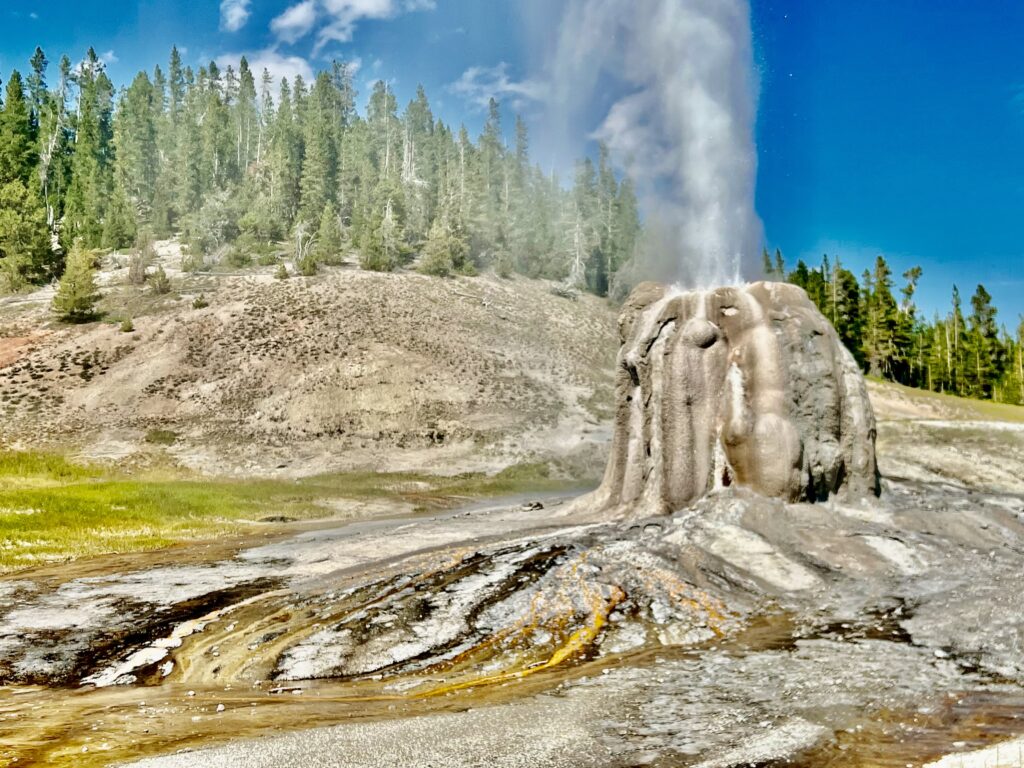
The trail to Lone Star is 2.5 miles each way (four by bike from Old Faithful) but is well worth the wait. The rangers or bike shop manager will show you the route on a map or you can find the NPS description here. The geyser itself is stunning, putting on a private show for those who wait. It erupts every three hours for twenty minutes spraying 45-foot-high plumes of mist into the air. There is usually a two-minute minor eruption twenty minutes before the major one. It is hard to find predictions for eruptions online, but it is worth the trip regardless. If the journey to the geyser or the lack of certainty around the timing makes this not worthwhile for you it is not a major attraction and can be bypassed.
Drive down Grand Park Road towards Madison Junction. Unless you’ve already seen them, visit the Black Sand or Biscuit Basins by walking the boardwalks through the attractions. There isn’t much to see, so this shouldn’t take very long. Biscuit Basin is named for the stone “biscuits” that were thrown by a geyser after a major eruption some years ago.
Next stop: the Grand Prismatic Spring. A classic postcard view of the multicolored pool is even more inspiring in person from the boardwalk that surrounds it.

If you have extra time in your day, or if you did not hike to Lone Star, the hike to the overlook is worthwhile. From there, you can get a birds-eye view of the spring in all its glory. It is 0.6 miles to the overlook. The late afternoon should be less busy, but you won’t be alone. This area is always crowded.
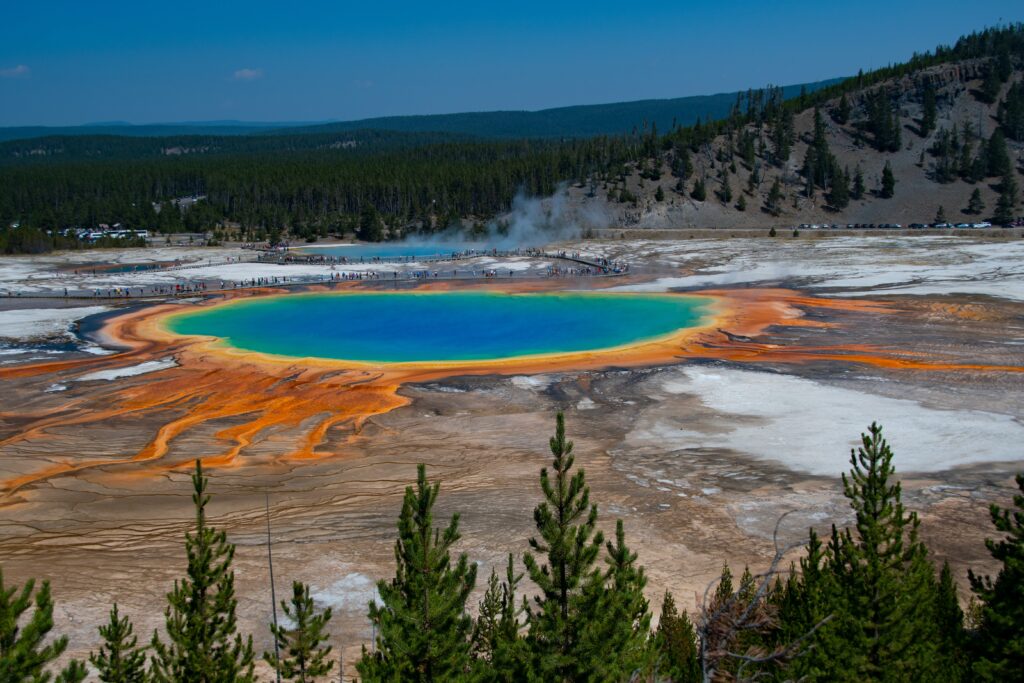
If you are staying in West Yellowstone, build in time for the Grizzly and Wolf Discovery Center. It is a home for grizzly bears and wolves who cannot live in the wild. The center functions like a zoo.
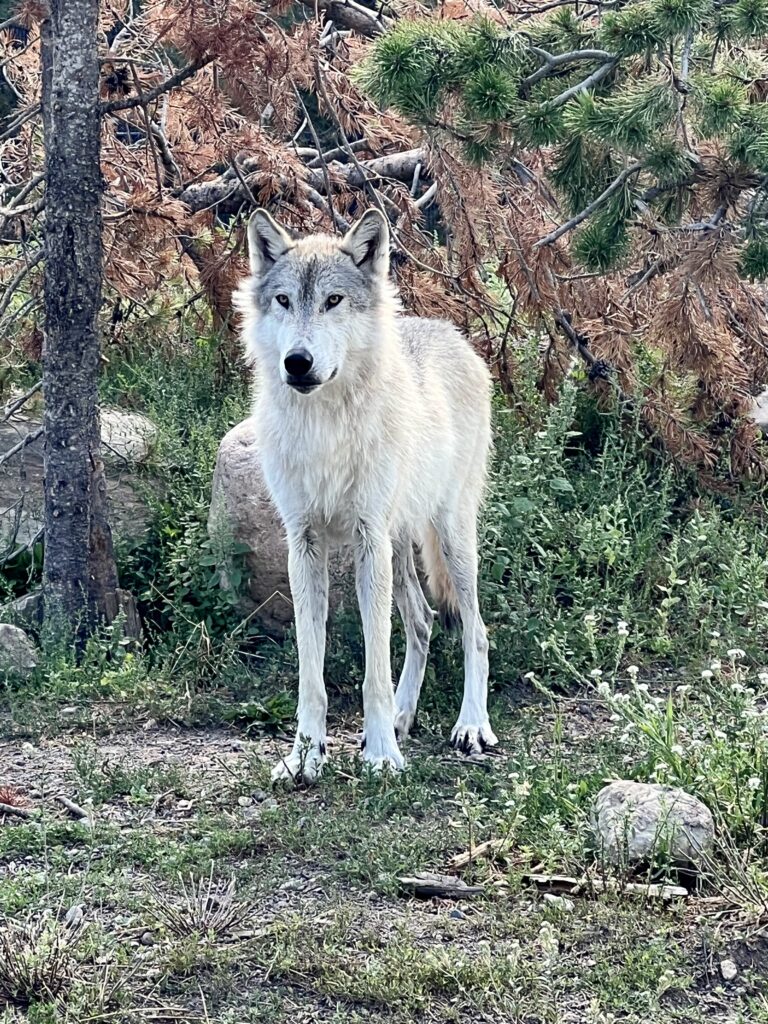
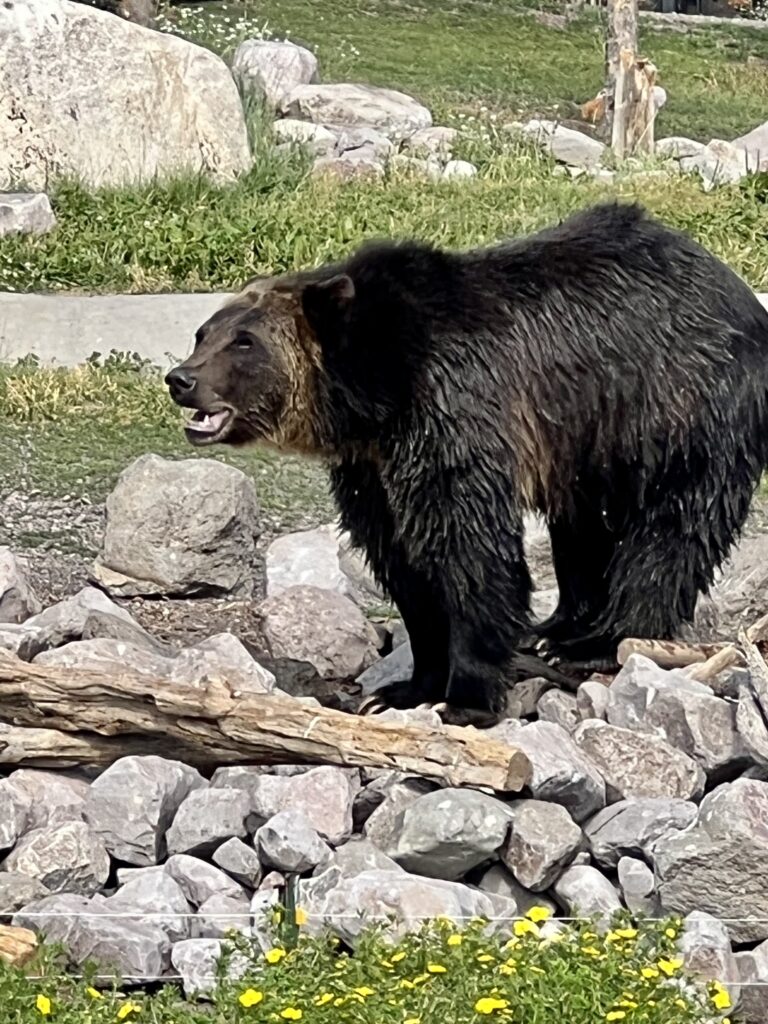
Day 2:
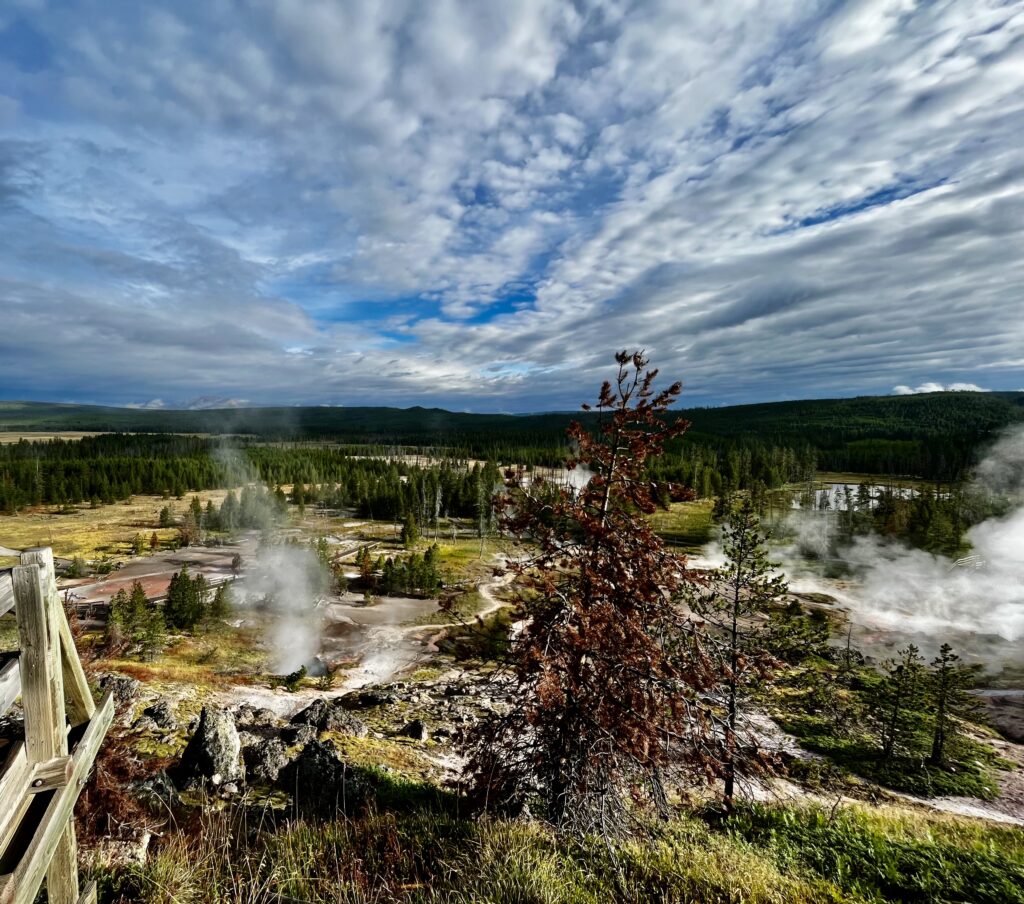
Start your day at the Artist Paint Pots just after Madison Junction on Upper Loop Road. The dramatic spill of colors from the pools in the area is worth seeing.
Next hit Norris Geyser Basin and consider hiking both boardwalk loops. If you’ve reached your hiking quota the Porcelain Basin loop will suffice. Norris is a unique set of geysers that will not bore you. It is the oldest geothermal area in Yellowstone and has some of the most unusual geysers. The geysers here are far hotter than the ones in the Upper Geyser Basin creating a different environment that is even harsher for everything except bacteria. Bacteria thrive in the geysers with more life in a colony than the entire human population. The area should be quiet in the morning making it a great time to visit.

Next, visit the Museum of the National Park Ranger. This is a quick stop, but it’s a great museum that does not get much traffic. It is staffed by retired rangers who are very passionate about explaining their profession to visitors.
Drive on the Northern Loop Road to Mammoth Hot Springs. It will be a bit crowded mid-day, but the Upper Parking is your best bet. Mammouth’s geysers are cooler than the other geysers in the park. They produce a fascinating deposition of travertine that stems from limestone under their vents. The white terrace is completely unique to this area.

Drive on the Upper Loop Road to Blacktail Plateau Drive. The Blacktail Plateau Drive detours off the loop road, connecting back after seven miles. It is an easy drive, and you’ll see a completely different section of the park. Plus, this is your best chance of spotting black bears. Right near the exit, there is a turnoff for the petrified tree. The tree is a roughly twenty-foot stump of petrified wood surrounded by a cast iron fence.
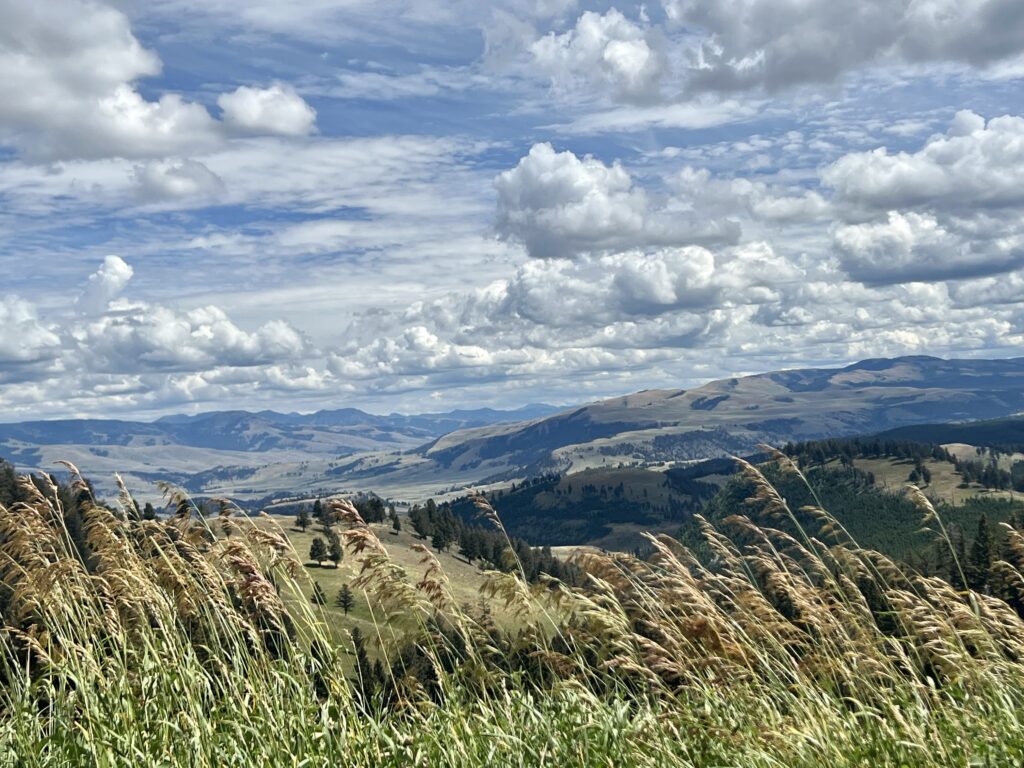
When you reach Tower Junction, continue into Lamar Valley to see some bison and wildlife. Bison are plentiful, and you will see many. Wolves and grizzlies are rare. (We saw only one Grizzly on our way out of the park). The road winds artistically through the valley towards Gardiner, Montana. When you complete your western safari, turn back to Tower Junction at one of the plentiful pullouts along the road. On your drive to Canyon Village consider driving up Chittenden Road to Mount Washburn Trailhead. You will get stunning views of an expanse of plains, the Absaroka Mountains, and Yellowstone Canyon. If you are left with time you may consider hiking Washburn, but bringing bear spray is imperative. The 5.6-mile hike takes more time than one would expect.
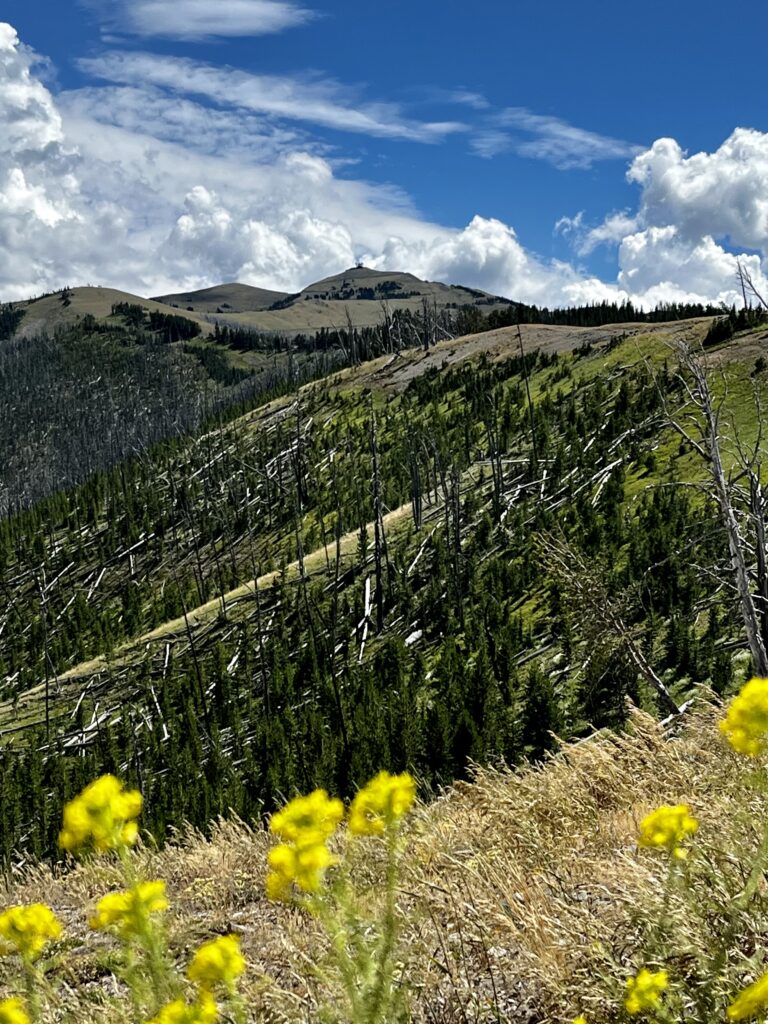
After Chittenden Road, drive the loop road to Canyon Village. Stopping at the pullouts including Calcite Springs and Tower Fall is a good idea. If your accommodations allow, sunset over the Yellowstone Canyon North Rim is a special experience.

Day 3:

As always, we recommend getting to the first destination early. Consider getting up for sunrise over The Grand Canyon of Yellowstone if you missed the sunset. I recommend driving the North Rim and stopping for short hikes at the different viewpoints. The brink of the Lower Falls has an extraordinary view, but you can get a similar experience with less hiking at the Brink of the Upper Falls if you are short on time.
Drive to the Clear Lake Trailhead and hike the South Rim Trail to Artist Point for a more immersive canyon experience. Alternatively, you could drive all the way to the point with less walking and reap the best views. This area can be crowded, but the earlier you arrive the better. Morning light on the yellow rock of the canyon creates a special effect for photography.

From here, the itinerary varies based on your next destination. If you are heading back toward West Yellowstone you follow the middle loop road from Canyon Village. You should consider traveling south to hit the major destinations described below before your departure. Gardiner and Glacier National Park require driving out through Lamar Valley to the north. If you plan on traveling north you may want to skip the Lamar Valley on Day 2 and spend the time climbing Mt. Washburn or visiting Hayden Valley and Yellowstone Lake near the canyon as described below. This way, on Day 3, you can enjoy Lamar on the way out of the park. Finally, if you plan to leave through Cody, drive towards the Hayden Valley.
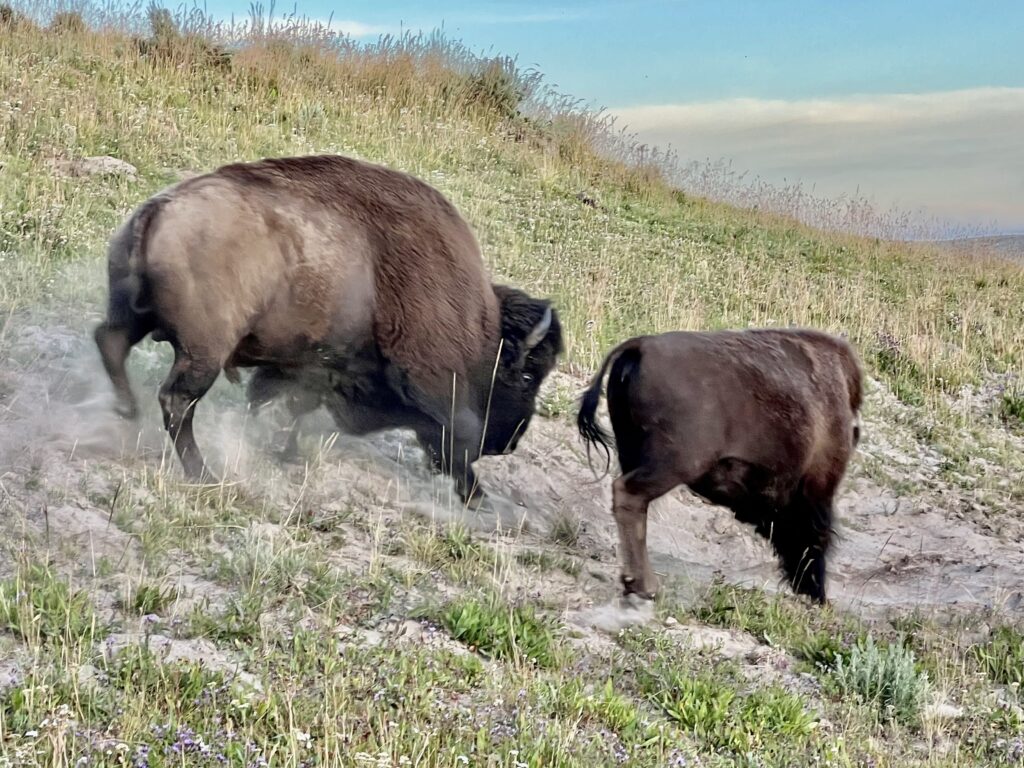
Hayden Valley is the best place to see wolves. Bring your binoculars and look for grey spots near the treeline at the edge of the plains. It is also a prime bison crossing location. Watch out for traffic! The rolling hills of the valley are quite picturesque and there are plenty of turnouts to enjoy them. Yellowstone Lake Visitor Center is the final destination for seeing the lake. If you are leaving the park, this plan should allow you some time to do so. Bridge Bay Campground or the Lake Lodge are great options to stay near the lake if you want one more night in this magical park.
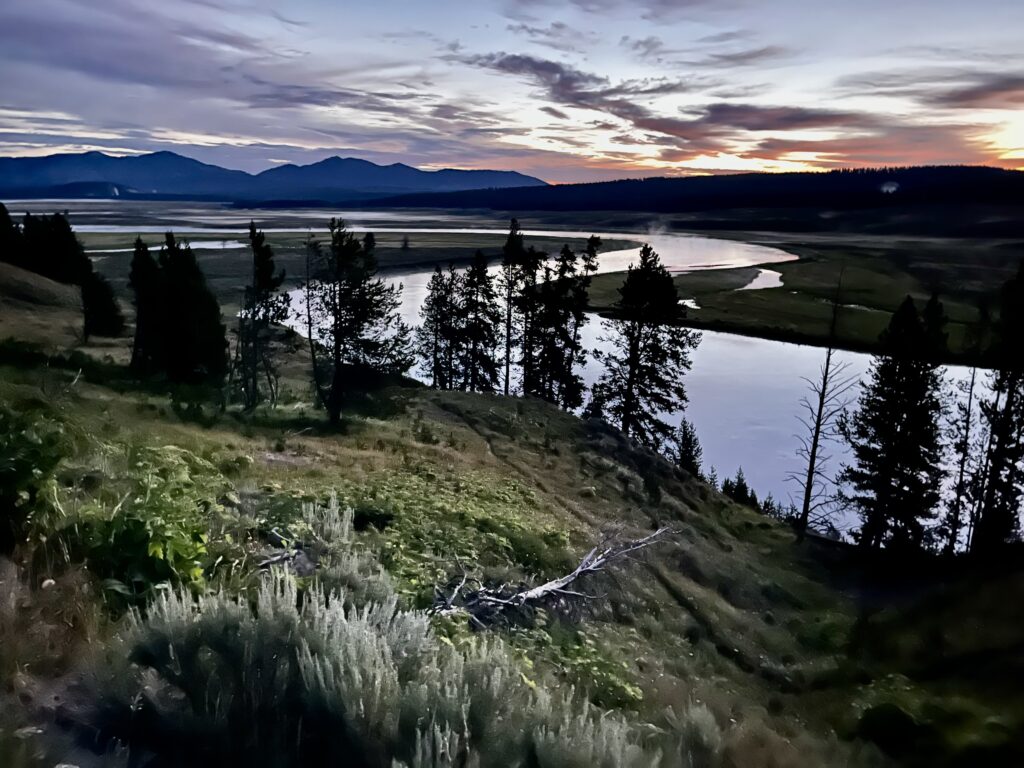
Traveling through Yellowstone is delightful and somehow leaves you feeling carefree. This is a park worth visiting! There is a lot to do, but we’ve covered all of the major attractions above.
To see my trip report about our time in Yellowstone click here.
This post may contain affiliate links. We may receive a small compensation per purchase from these links. This comes at no cost to you and supports the management of the blog. All product recommendations have been valued in the field.
Notes:
- Bring bear spray. We use UDAP Bear Spray because it is priced better than other “high-performance” sprays.
- We used our binoculars every day for wildlife spotting. We used trail running shoes and hiking boots a lot during this trip.
- I recommend always having water. The dry air had us drinking more than usual. Camelbak makes an outstanding water pack, or you could use a trail running vest. The vests are lightweight and very useful.
- Lodging is easy to find but requires early booking in the park. Some campgrounds are on Recreation.gov, and others can be found on the Yellowstone National Park Lodges website.
- Drive times are long in this massive park, and wildlife can lengthen them further.